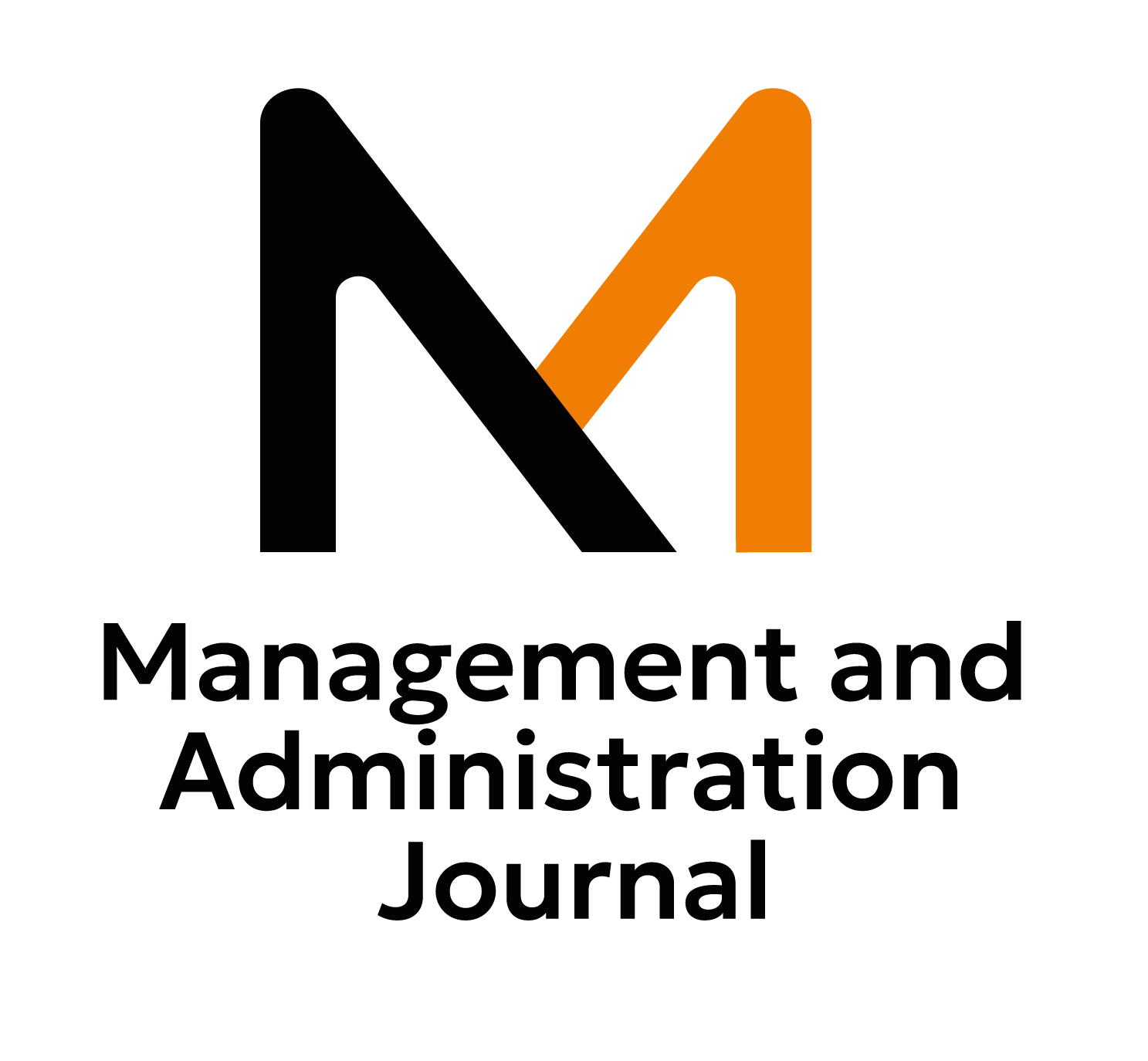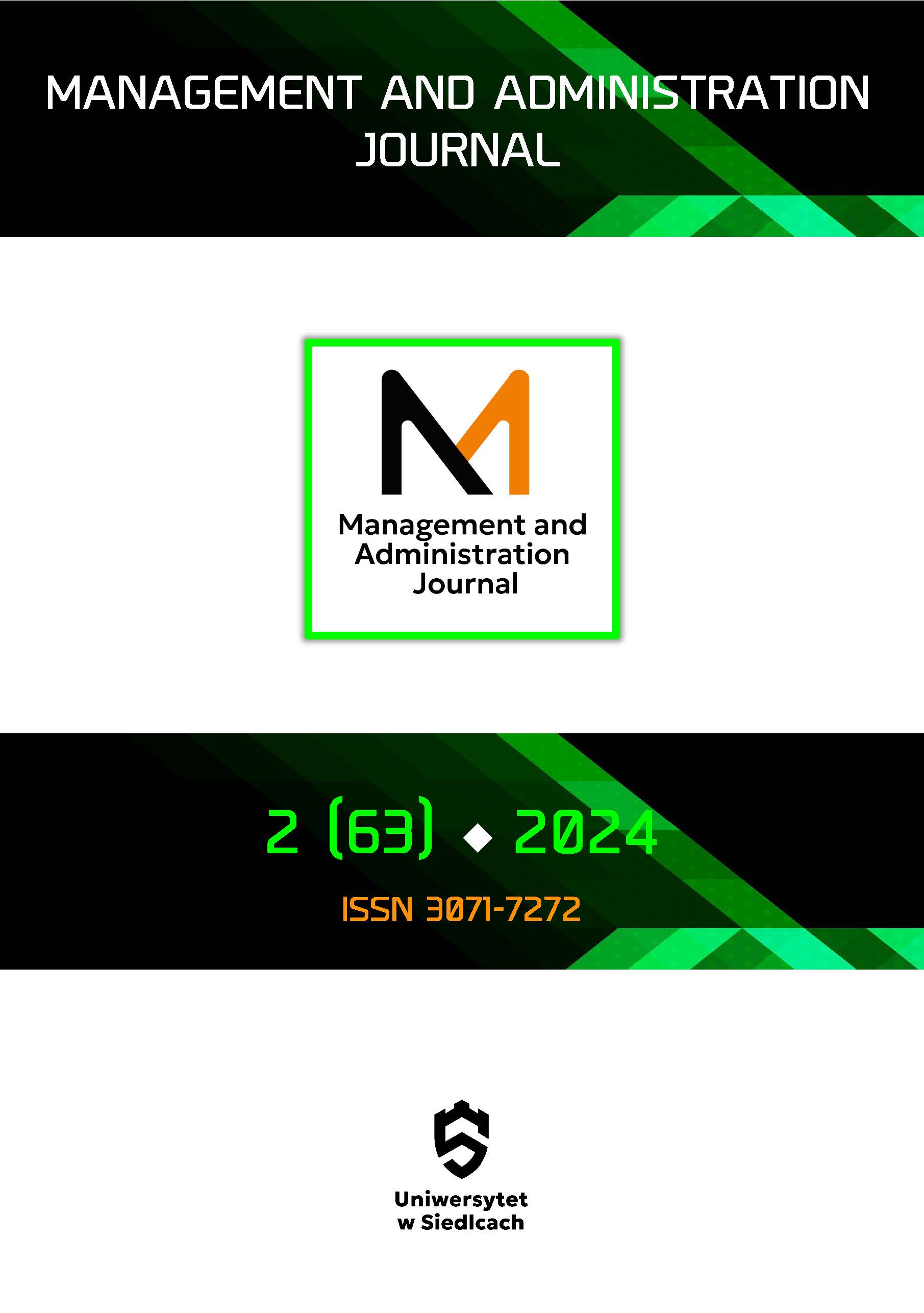DIFFERENTIATING THE DIMENSIONS OF THE SMART CITY CONCEPT IN METROPOLITAN AREAS
DOI:
https://doi.org/10.34739/maj.2024.02.02Słowa kluczowe:
smart city, sustainable development, multi-criteria decision-making methods, ranking of citiesAbstrakt
Celem niniejszego opracowania jest ocena zróżnicowania miast położonych na terenie poznańskiego obszaru metropolitarnego poznańskiej pod kątem sześciu podstawowych obszarów koncepcji inteligentnego miasta: inteligentnej gospodarki, inteligentnego zarządzania, inteligentnej mobilności, inteligentnego środowiska i inteligentnego życia. Ocena została przeprowadzona z wykorzystaniem wielokryterialnej metody decyzyjnej TOPSIS. Jako kryteria porównawcze wybrano łącznie 31 wskaźników odnoszących się do tej koncepcji a wskazywanych w literaturze naukowej. Analizą objęto 14 miast. W konsekwencji opracowano siedem autorskich rankingów - sześć prezentujących ocenę działań miast w zakresie poszczególnych obszarów „smart city” oraz ranking zbiorczy wskazujący miejsce poszczególnych miasta w ich wysiłkach wpisujących się w budowę inteligentnego miasta na tle całej grupy. Rankingi te mogą stanowić wskazania do udoskonalenia programowania ich rozwoju przez decydentów miast położonych w obszarach metropolitarnych w wyróżnionych zakresach. Porównanie pozycji poszczególnych jednostek pozwoliło na wskazanie, które z nich i w jakim obszarze mają najwyższe osiągnięcia a które kwestie „smart city” wymagają uważniejszego spojrzenia decydentów. Wyniki badań pozwoliły na wskazanie kierunków rozwoju działań, jakie realizowane są w poszczególnych jednostkach na tle całej grupy.
Pobrania
Bibliografia
Aksoy, E. (2024). A conceptual exploration of hidden spatial layers: reading urban-breccia. Sustainability, 16(4), 1625.
Allam, Z., Sharifi, A., Bibri, S.E., Jones, D.S., Krogstie, J. (2022). The metaverse as a virtual form of smart cities: Opportunities and challenges for environmental, economic, and social sustainability in urban futures. Smart Cities 5(3), 771-801.
Caselli, B., Pellicelli, G., Rossetti, S., Zazzi, M. (2022). How are medium-sized cities implementing their smart city governance? Experiences from the Emilia-Romagna Region. Sustainability, 14(22), 15300.
Chen, C.T. (2000). Extensions of the TOPSIS for group decision-making under fuzzy environment. Fuzzy Sets and Systems, 114(1), 1-9.
da Silva Tomadon, L., do Couto, E.V., de Vries, W.T., Moretto, Y. (2024). Smart city and sustainability indicators: a bibliometric literature review. Discover Sustainability. 5(1), 143.
Demircan, B.G., Yetilmezsoy, K. (2023). A hybrid fuzzy AHP-TOPSIS approach for implementation of smart sustainable waste management strategies. Sustainability, 15(8), 6526.
Dworniczak, P. (2012). Metoda TOPSIS w warunkach rozmytości intuicjonistycznej. [TOPSIS in the Intuitionistic Fuzzy Environment]. Zeszyty Naukowe/Uniwersytet Ekonomiczny w Poznaniu, (241), 64-76.
El Alaoui, M. (2021). Fuzzy TOPSIS: logic, approaches, and case studies. Boca Raton: CRC press.
Falco, S., Angelidou, M., Addie, J. (2018). From the “smart city” to the “smart metropolis”? Building resilience in the urban periphery. European Urban and Regional Studies, 26(2), 205-223.
Gorzeń-Mitka, I. (2022). Dostępność i jakość zasobów mieszkaniowych – porównanie wielokryterialne gmin miejskich województwa wielko-polskiego metodą MULTIMOORA. [Development potential in the area of availability and quality of housing resources – multicriteria compa-rison of urban municipalities of Wielkopolska voivodeship using the MULTIMOORA method]. Rozwój Regionalny i Polityka Regionalna, 62(5), 183-197.
Hajduk, S. (2021). Multi-criteria analysis of smart cities on the example of the polish cities. Resources, 10(5), 44.
Hajduk, S., Jelonek, D. (2021). A decision-making approach based on TOPSIS method for ranking smart cities in the context of urban energy. Energies. 14(9), 2691.
Iwan, A., Poon, K. (2018). The role of governments and green building councils in cities’ transformation to become sustainable: case studies of Hong Kong (East) and Vancouver (West). International Journal of Sustainable Development and Planning, 13(04), 556-570.
Jankowska, M. (2015). Smart city jako koncepcja zrównoważonego rozwoju miasta – przykład Wiednia. Studia i Prace WNEiZ Uniwersytetu Szczecińskiego, 42(2), 173-182.
Janssen, C., Basta, C. (2022). Are good intentions enough? Evaluating social sustainability in urban development projects through the capa-bility approach. European Planning Studies, 32(2), 368-389.
Jefmański, B. (2013). Rozmyta metoda TOPSIS jako narzędzie identyfikacji determinant jakości usług i produktów. [The Fuzzy TOPSIS Method as a Tool for Identification of Services and Products Quality Determinants]. Handel Wewnętrzny, (5), 29-42.
Jonek-Kowalska, I. (2023). The exclusiveness of smart cities – myth or reality? Comparative analysis of selected economic and demographic conditions of Polish cities. Smart Cities, 6(5), 2722-2741.
Khanjanasthiti, I., Chandrasekar, K., Bajracharya, B. (2021). Making the gold coast a smart city – an analysis. Sustainability, 13(19), 10624.
Kinelski, G. (2022). Smart-city trends in the environment of sustainability as support for decarbonization processes. Polityka Energetyczna, 25(2), 109-136.
Łuczak, A., Wysocki, F. (2011). Porządkowanie liniowe obiektów z wykorzystaniem rozmytych metod AHP i TOPSIS. [Linear ordering of ob-jects from application of fuzzy AHP and TOPSIS]. Przegląd Statystyczny, 58(1-2), 3-23.
Mańka-Szulik, M., Krawczyk, D., Wodarski, K. (2023). Residents’ perceptions of challenges related to implementation of smart city solutions by local government. Sustainability, 15(11), 8532.
Mwamba, J. (2020). Analysing the sustainability challenges of informal urban settlements: the case of Chibolya in Lusaka Zambia. Journal of Sustainable Development, 13(6), 55.
Nazim, M., Mohammad, C.W., Sadiq, M. (2022). A comparison between fuzzy AHP and fuzzy TOPSIS methods to software requirements selection. Alexandria Engineering Journal, 61(12), 10851-10870.
Odefadehan, C. (2021). Smart city development, urban governance and affordable housing in Lagos Nigeria. Caleb Journal of Social and Management Science, 6(1), 51-69.
Ogrodnik, K. (2023). Application of MCDM/MCDA methods in city rankings-review and comparative analysis. Economics and Environment, 86(3), 132-151.
Ogrodnik, K. (2020). Multi-criteria analysis of smart cities in Poland. Geographia Polonica, 93(2), 163-181.
Okonta, D.E.,Vukovic, V. (2024). Smart cities software applications for sustainability and resilience. Heliyon, 10(12), e32654.
Prasertsri, N., Sangpradid, S. (2020). Parking site selection for light rail stations in Muaeng District, Khon Kaen, Thailand. Symmetry. 12(6), 1055.
Putra, R., Anisa, L., Sherra, B., Edison, E., Syah, N., Catri, I. (2022). Approach to development sustainable green city. Extra Teritorial, 1(02).
Rana, H., Umer, M., Hassan, U., Asgher, U., Silva-Aravena, F., Ehsan, N. (2023). Application of fuzzy TOPSIS for prioritization of patients on elective surgeries waiting list-A novel multi-criteria decision-making approach. Decision Making: Applications in Management and Engineer-ing, 6(1), 603-630.
Rosado-García, M., Kubus, R., Argüelles-Bustillo, R., García-García, M. (2021). A new european bauhaus for a culture of transversality and sustainability. Sustainability, 13(21), 11844.
Roszkowska, E. (2013). Zastosowanie rozmytej metody Topsis do oceny ofert negocjacyjnych. [Application of the Fuzzy TOPSIS Method to the Estimation of Negotiation Offers]. Prace Naukowe Uniwersytetu Ekonomicznego we Wrocławiu. Taksonomia, 20(278), 74-84.
Ryba, M. (2017). Czym jest koncepcja smart city, a zatem dlaczego powinniśmy je nazywać miastem sprytnym. [What is a ‘smart city’ concept and how we should call it in Polish]. Prace Naukowe Uniwersytetu Ekonomicznego we Wrocławiu, 467, 82-90.
Sabory, N., Senjyu, T., Danish, M., Hosham, A., Noorzada, A., Amiri, A., Muhammdi, Z. (2021). Applicable smart city strategies to ensure energy efficiency and renewable energy integration in poor cities: Kabul case study. Sustainability, 13(21): 11984.
Saker, A. (2023). Nurturing sustainable urban space: integrating smart city innovations and earthship design principles for eco-friendly futures. International Journal of Architectural Engineering and Urban Research, 6(2), 376-400.
Ševčík, M., Chaloupková, M., Zourková, I., Janošíková, L. (2022). Barriers to the implementation of smart projects in rural areas, small towns, and the city in Brno metropolitan area. European Countryside, 14(4), 675-695.
Shamsuzzoha, A., Piya, S., Shamsuzzaman, M. (2021). Application of fuzzy TOPSIS framework for selecting complex project in a case company. Journal of Global Operations and Strategic Sourcing, 14(3), 528-566.
Śleszyński, P. (2013). Delimitacja Miejskich Obszarów Funkcjonalnych stolic województw. [Delimitation of the Functional Urban Areas around Poland’s voivodship capital cities]. Przegląd Geograficzny. 85(2), 173-197.
Śleszyński, P., Komornicki, T. (2016). Klasyfikacja funkcjonalna gmin Polski na potrzeby monitoringu planowania przestrzennego. [Functional classification of Poland’s communes (gminas) for the needs of the monitoring of spatial planning]. Przegląd Geograficzny, 88(4), 469-488.
Tubis, A., Werbińska-Wojciechowska, S. (2023). Fuzzy TOPSIS in selecting logistic handling operator: case study from Poland. Transport, 38(1), 12-30.
Yigitcanlar, T., Kamruzzaman, M. (2018). Does smart city policy lead to sustainability of cities?. Land use Policy. 73, 49-58.
Zeng, X., Yu, Y., Yang, S., Lv, Y., Sarker, N. (2022). Urban resilience for urban sustainability: concepts, dimensions, and perspectives. Sustainability, 14(5), 2481.
Pobrania
Opublikowane
Numer
Dział
Licencja
Prawa autorskie (c) 2024 Management and Administration Journal

Utwór dostępny jest na licencji Creative Commons Uznanie autorstwa – Użycie niekomercyjne 4.0 Międzynarodowe.





